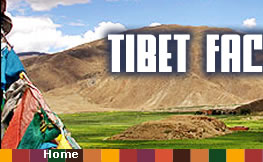|
Under the impact of the unique climate on the Qinghai-Tibet
Plateau, and increasing human activities, Tibet suffers from low
coverage rate of plants in the Yarlung Zangbo River Valley,
desertification, and a fragile ecological environment. The Tibet
Autonomous Region has set up a special eco-function protection area
at the source of the Yarlung Zangbo River, which is geared to
protect plant coverage of the Gyima Yangzoin, source of the Yarlung
Zangbo River, and its upper reaches. The middle reaches of the
river is an area which, with high population density and high
concentration of industries, suffers greatly from desertification.
Since the 1990s, the regional government has been encouraging the
planting of grass and trees to curb the situation.
With the further development of economy, the regional government
has placed environmental protection on its work agenda. In 2004, it
required the 15 enterprises which contributed 80 percent of the
regional pollution to meet the regulated standards of environmental
protection. They include the Tibet Yangbajain Geothermal
Experimental Power Station and the Lhasa Cement Works.
Despite the trend towards a worsening global environment, Tibet,
widely known as "the roof of the world", remains one of the least
polluted regions in the world. No acid rain and no radiation
pollution have so far occurred there. Scientific monitoring shows
that Tibet is exposed to insignificant discharge of "three wastes",
referring to industrial discharges, waste water and waste solid
materials. Lhasa, the political, economic and cultural center of
Tibet, where people live in relative concentration, contributes 90
percent of the regional total for the three kinds of wastes. Even
so, the city is the least contaminated urban area in China.
The Qomolangma area meets the State's first class standard for
air quality. Tibet has not witnessed any serious environmental
"accident" and no dangerous materials or radioactive waste have
been found.
In order to prevent urban lifestyle garbage and industrial solid
wastes from polluting the environment, Tibet has strengthened its
supervision, especially over the activities of hospitals in the
disposal of wastes. In 2004, Tibet started construction of the TAR
Dangerous Wastes Disposal Center and the TAR Radiation Wastes Bank.
Tibet will set up a Hospital Wastes Disposal Center in six
prefectures in 2006, to gradually standardize its supervision over
the disposal of dangerous waste materials, hospital waste and
radiation-active waste materials.
The water quality of the Yarlung Zangbo River, Jinshajiang
River, Nujiang River, Lancangjiang River and other major rivers in
Tibet remains high. The surrounding area of the 1,600 lakes is not
polluted and retains a pristine quality. Though many people visit
the Nam Co and Yangzhog Yumco Lake, the water quality is up to the
first class standard set by the State.
|





